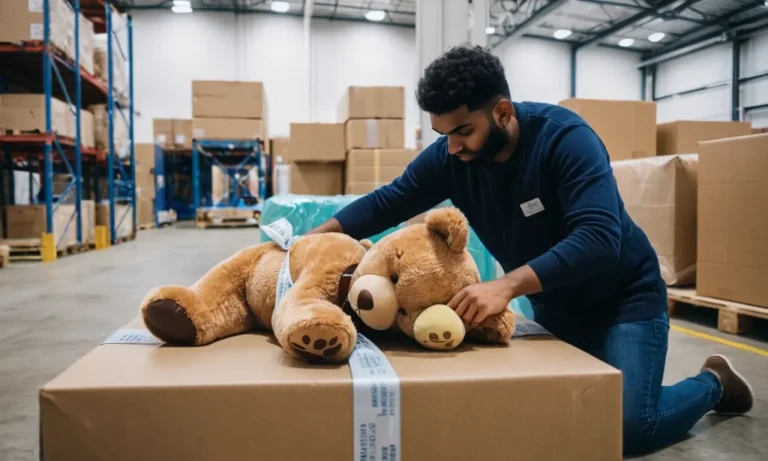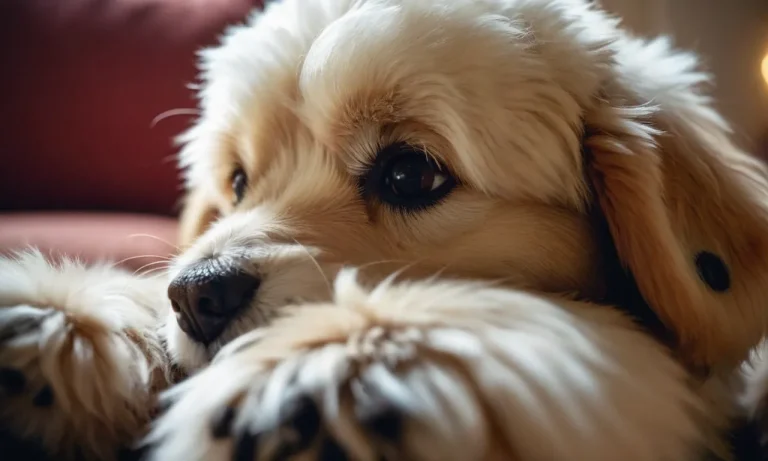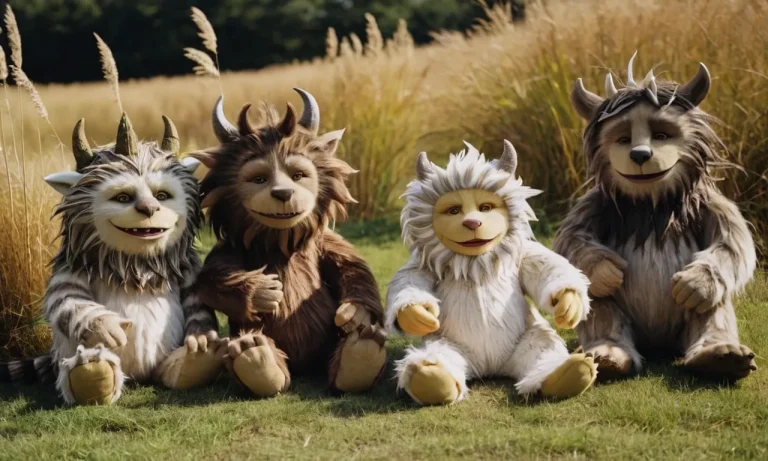Stuffed animals occupy a special place in many people’s hearts. The beloved plush toys from our childhood often carry sentimental value that makes us want to preserve them for years to come.
If you’re short on time, here’s a quick answer to preserving stuffed animals: store them in acid-free boxes away from sunlight, extreme temperatures, and moisture. Consider placing cedar blocks or lavender sachets inside to deter bugs and prevent musty odors.
In this comprehensive guide, you’ll learn pro tips for protecting stuffed animals from damage and deterioration. We’ll cover ideal storage methods, cleaning techniques, display options, and when to seek professional help for repairs.
Proper Storage Techniques
Acid-Free Boxes
- Place your treasured stuffed animals in acid-free boxes to prevent deterioration from acidic paper or cardboard. These boxes are designed with a higher pH to counteract damaging acids.
- Acid-free boxes will protect your stuffed friends from yellowing over time and becoming brittle. You can buy custom-sized acid-free boxes from specialty retailers or archival supply stores. Make sure to choose boxes large enough to allow some air circulation, but not so big that the stuffies move around freely or get crushed.
- Lining these boxes with acid-free unbuffered tissue paper adds an extra layer of protection.
Cedar and Lavender
Without proper protection, plush toys can attract insects like carpet beetles or clothes moths, which can damage fabrics or stuffing. Moth balls are dangerous chemicals you should avoid near children and pets. Safer alternatives include:
- Cedar blocks and shavings, which naturally repel insects due to the pleasant-smelling cedar oil.
- Dried lavender, which has antibacterial and antimoth properties. Neatly tuck sprigs of lavender inside the boxes with your stuffed animals and refresh periodically.
Climate Control
| Too hot | Too cold | Ideal temperature |
|---|---|---|
| Can encourage insect activity and speed deterioration | May cause plush toys to become stiff or fragile | 60 to 68°F with moderate humidity |
Regulating the climate around your stuffed animal collection is another key to preserving them without damage. Extremes of heat or cold should be avoided. Ideal storage conditions are cool, dark, and dry. Basements and spare bedrooms are often good options.
Cleaning Stuffed Toys
Surface Cleaning
Giving your cherished stuffed animals a regular surface clean can help keep them looking their cuddly best for years to come. Use a soft-bristled toothbrush and gentle, pet-safe cleaner to lightly scrub the fur and exterior fabric. Take care around small parts like eyes and noses.
Allow to fully air dry before storing or displaying.
Spot Treating Stains
Uh oh, looks like your favorite teddy got into something sticky! Don’t panic – spot treat stains right away with a small amount of mild dish or laundry soap and warm water. Use a clean toothbrush or cloth to gently dab and lift the stain, avoiding friction that could damage the fabric.
Rinse thoroughly to remove all soap residue. Stuff damp areas with paper towels and allow to completely dry before returning your pal to the shelf.
When to Wash
Washing stuffed animals too often can cause the filling to clump or fabric to wear prematurely. But every few years, a proper wash can refresh dingy toys. Check manufacturer instructions first. Many modern plush fabrics are machine washable if you securing close zippers, remove non-washable parts like batteries or sound devices, and use a gentle cycle with cool water and mild detergent.
Always air dry fully, and fluff filling back into shape with your hands afterwards. For delicate heirloom toys, consider professional dry cleaning instead.
By learning proper stuffed animal care techniques like regular dusting, prompt stain removal, and occasional gentle washing, your beloved plush pals can remain cuddly and clean for years of love. With a little TLC, you’ll be enjoying sweet stuffed animal snuggles for life.
Check out websites like www.stuffedanimals101.com for more toy care tips!
Safe Display Tips
Avoid Direct Sunlight
Keeping stuffed animals out of direct sunlight is one of the best ways to preserve them. Ultraviolet rays from the sun can cause fading, discoloration, and deterioration over time. An easy fix is to display stuffed animals in indirect natural light, facing windows without direct sun exposure.
You can also install UV-filtering film on windows for extra protection.
If placing stuffed animals near windows is unavoidable, make sure to rotate them periodically so the fading effects are distributed evenly. Frequent dusting will also prevent damaging particles from accumulating. With some simple precautions, you can safely display stuffed animals near sunlight.
Rotate Toys Periodically
Rotating stuffed animal displays every few months ensures all sides get exposed evenly over time. Areas that are constantly facing away from light tend to retain deeper, more vibrant colors. By periodically moving toys to a different surface or repositioning their stance, you can distribute minor fading evenly across all sides.
With a consistent rotation schedule, the aging effects get evenly distributed for a natural, graceful preservation of colors and materials over many years of play and enjoyment.
Support Delicate Areas
Providing ample support for a stuffed animal’s most delicate parts, like limbs and tails, reduces strain over time. Well-supported toys maintain their shape better. A few easy ways to lend support:
| Lean against sturdy objects | Use stands or display boxes |
| Sit upright without pressure points | Lay completely flat if possible |
You can find specialized stuffed animal stands on sites like The Container Store. For budget options, use everyday household objects like mugs, bowls, boxes, and books to prop up delicate extremities in safe positions.
With supportive display methods and by avoiding excess pressure on vulnerable seams, you can help beloved stuffed critters retain their snuggly shapes for many years of cuddles!
Professional Repair Options
When your cherished stuffed pals start showing signs of wear like ragged seams, missing eyes, or scruffy fur, don’t despair! There are professional services that can restore them to their former glory so you can enjoy more years of cuddles.
Resewing Seams
Loose or unraveling seams are one of the most common stuffed animal ailments. Rather than attempt stitches yourself, consider letting an expert handle the operation. Many doll hospitals offer professional resewing and the delicate work needed for well-loved toys.
Seam repair starts around $15-$30 depending on the extent of damage. This affordable fix keeps beloved bedtime pals intact for more years of snuggles!
Replacing Damaged Parts
Over years of love, stuffed animals can lose noses, eyes, or other parts. While you may be tempted to sew on makeshift replacements, nothing beats original-looking parts from a professional shop. Prices vary based on the complexity of the restoration:
- Plastic noses or eyes cost approximately $5 each
- Replacement sound boxes run $15-$30
- Full limb replacements start around $45 per limb
Some hospitals offer full customization with designer noses, paw pads, and other options for truly unique repairs. Embrace your stuffie’s new look!
| Average Costs for Common Stuffed Animal Repairs | |
| Resewing Seams | $15-$30 |
| Replacing Noses/Eyes | $5 each |
| Replacing Sound Boxes | $15-$30 |
Restoring Vintage Toys
For treasured vintage or antique stuffed pals, specialists in toy restoration can carefully clean and repair aged materials. Prices vary greatly based on factors like toy size, complexity, rarity of materials, and extent of damage.
Small vintage stuffed animals may cost $100-$300 to restore, while large antique Steiff bears run $1,000-$3,000.
The investment preserves family history and lets future generations cuddle your childhood companion. As one restorer notes, “These toys have great sentimental value. There’s just something heartwarming about seeing toys restored for future generations to enjoy.” 😊
Conclusion
With some planning and preventative care, your cherished stuffed pals can remain in good condition for years to come. Follow these storage, cleaning, and display tips to stop damage and deterioration over time.
By keeping plush toys away from light, extreme temps, bugs, and dirt buildup, you can preserve their sentimental value as well as their physical condition. With extra care and occasional repairs, they’ll be lifelike loveys ready to comfort and delight future generations.







